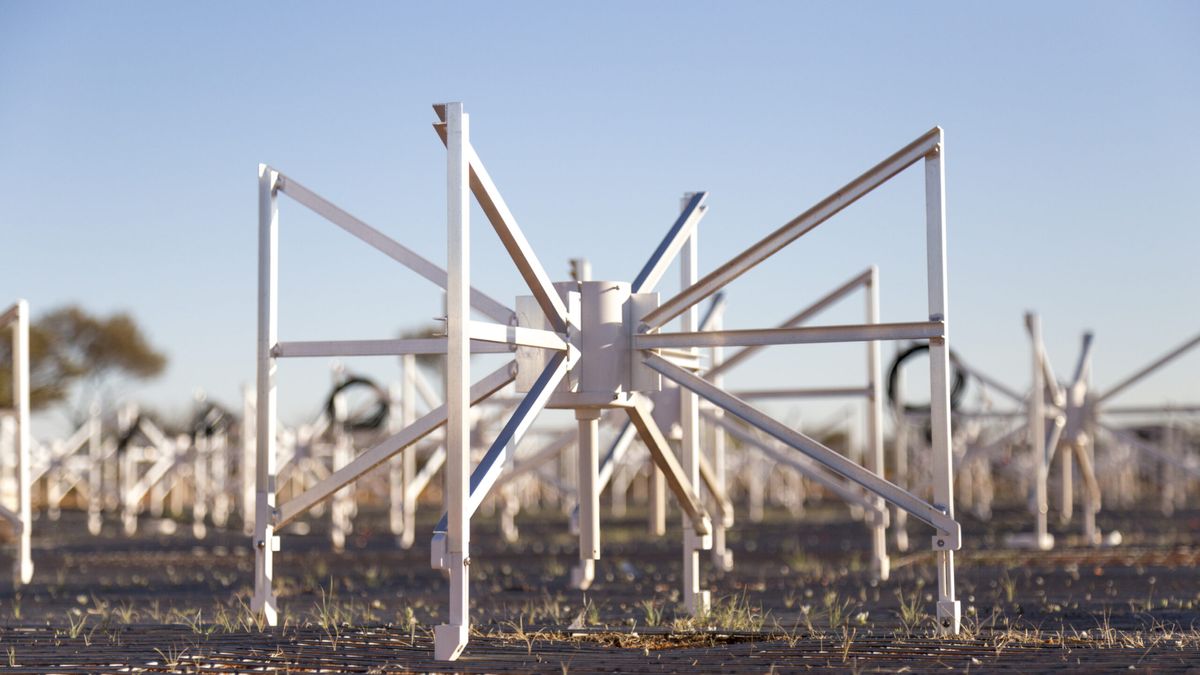
The atmosphere is filled with radio-frequency interference (RFI), but two astronomers have discovered a potential solution to mitigate some of the disruptive signals that affect radio telescopes. They successfully tracked down an unintended TV broadcast reflected off a flying airplane.
“Astronomy is confronting a serious challenge,” explained Jonathan Pober from Brown University in Rhode Island, USA, as noted in a statement.
Satellites clutter the celestial sphere. As of June 2023, the United Nations Office for Outer Space Affairs reported a staggering 11,330 satellites in Earth orbit, with even more launched since. These satellites primarily facilitate various radio communications, which poses a significant challenge to the astronomical community.
“There are increasing worries — and even reports — suggesting that astronomers may struggle to conduct high-quality radio observations due to interference from satellite constellations,” Pober mentioned.
This issue is particularly pertinent for telescopes like the Murchison Wide-field Array (MWA) located in Western Australia, where Pober serves as the U.S. science lead. The MWA is equipped with 4,096 antennas, specifically designed to detect low-frequency radio waves between 70 and 300 MHz, which convey information from the universe‘s epoch of reionization when the first stars and galaxies were forming. However, since the MWA captures the entire sky simultaneously, “there isn’t a way to direct our telescopes away from satellites,” Pober noted.
Tracking the random nature of RFI and isolating its source has proven to be an incredibly challenging task. As a result, datasets tainted by RFI are often discarded, leading to significant data loss.
Yet, the discovery of a rogue television signal has sparked hope among astronomers, suggesting there might be a way to salvage some of that lost data.
The MWA operates within a 186-mile-wide (300-kilometer) radio quiet zone; however, it has frequently detected television broadcasts that shouldn’t occur within this area. The source of these transmissions had long been a mystery. “Then it struck us,” Pober recounted. “We thought, ‘What if the signal is reflecting off an airplane?’”
In collaboration with Ph.D. student Jade Ducharme from Brown University, Pober set out to validate their airborne theory. They employed two methods to pinpoint the source of the RFI: “near-field corrections,” which involve concentrating the radio telescope on interference-generating objects nearby, and “beamforming,” which allows the telescope to enhance its focus on a specific target.
By integrating these techniques, Pober and Ducharme successfully traced a television signal back to an airplane flying at 38,400 feet (11.7 kilometers) and traveling at 492 miles per hour (792 kilometers per hour). They found that the signal operated on the frequency band used by Australian digital TV channel 7, as it was being transmitted from outside the quiet zone and reflected off the aircraft.
By identifying the RFI’s source, astronomers can now model the interference patterns, ultimately enabling them to filter it out and retain the data for analysis.
“This represents a crucial advancement in our ability to eliminate human interference from the data,” stated Pober. “With precise identification and removal of interference sources, astronomers can preserve more of their findings, minimize frustrating data loss, and enhance the likelihood of making significant discoveries.”
However, tracking the RFI back to a passing airplane is just the beginning. The subsequent challenge lies in developing methods to eliminate similar signals from astronomical data. The ultimate goal is to extend this technique to not only filter out television signals reflected off aircraft but also to remove interference from overhead satellites. Given the overwhelming number of satellites, this presents a significantly greater challenge.
Nonetheless, Pober believes that refining signal detection is essential for the future of radio astronomy.
“We must prioritize investment in enhanced data analysis techniques to identify and eliminate human-generated interference,” he emphasized.
Pober and Ducharme’s research on tracing the stray television signal back to an airplane was published on February 12 in the journal Publications of the Astronomical Society of Australia.









